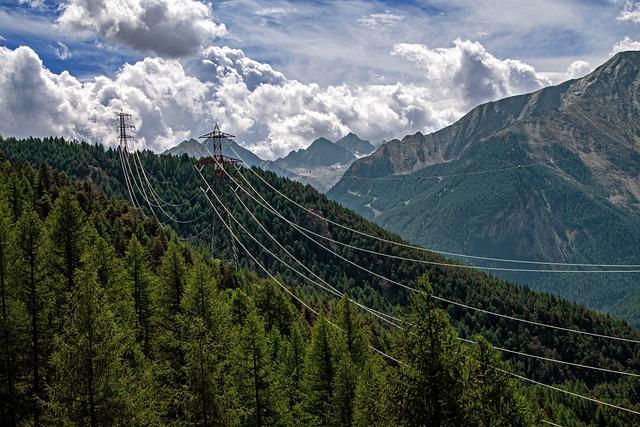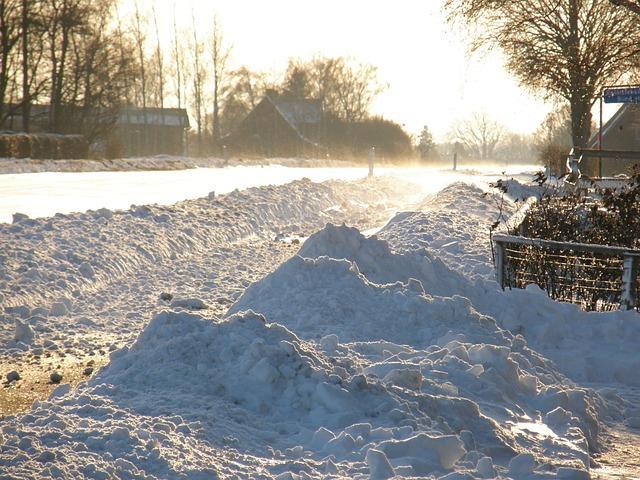Pruning plays a vital role in maintaining the health and productivity of fruit-bearing trees. By utilizing proper techniques, gardeners can encourage optimal growth and fruit production while also preventing disease and promoting overall tree longevity. In this article, we will delve into the various pruning techniques that can be employed to ensure the success of your fruit-bearing trees.
Table of Contents
- Benefits of Pruning for Fruit-Bearing Trees
- Timing and Frequency of Pruning
- Tools and Equipment Needed for Successful Pruning
- Techniques for Shaping and Training Fruit Trees
- Tips for Pruning Specific Types of Fruit Trees
- Q&A
- Conclusion
Benefits of Pruning for Fruit-Bearing Trees
Pruning is an essential practice for maintaining the health and productivity of fruit-bearing trees. Proper pruning techniques can help improve fruit quality, increase yield, and prevent diseases. Here are some of the key :
- Increased sunlight penetration: Pruning helps to open up the canopy of the tree, allowing more sunlight to reach the inner branches. This promotes photosynthesis and fruit development.
- Improved air circulation: Proper pruning helps to increase air circulation within the tree, reducing the risk of fungal diseases such as powdery mildew and apple scab.
- Enhanced fruit quality: By removing dead, diseased, or damaged branches, pruning helps the tree allocate resources to producing high-quality fruits.
| Benefit | Description |
|---|---|
| Increased sunlight penetration | Allows more sunlight to reach inner branches for better fruit development. |
| Improved air circulation | Reduces the risk of fungal diseases by increasing air flow within the tree. |
| Enhanced fruit quality | Helps the tree allocate resources to producing high-quality fruits by removing dead or damaged branches. |
Timing and Frequency of Pruning
Proper are essential for maintaining the health and productivity of fruit-bearing trees. The timing of pruning will depend on the type of tree, but generally, it is best to prune during the dormant season in late winter or early spring. This is when the tree is not actively growing, which minimizes stress and allows for optimal healing of pruning wounds.
For most fruit-bearing trees, an annual pruning session is usually sufficient. However, some trees may benefit from more frequent pruning, especially if they are young or have specific growth habits. Regularly inspecting the tree for diseased, damaged, or crossing branches can help determine when pruning is necessary. Remember, it is always better to prune lightly and frequently rather than drastically all at once.
Tools and Equipment Needed for Successful Pruning
When it comes to pruning fruit-bearing trees, having the right tools and equipment is essential for ensuring a successful outcome. Here is a list of the necessary items you’ll need:
- Sharp pruning shears: A good pair of sharp pruning shears is crucial for making clean cuts and preventing damage to the tree.
- Loppers: Loppers are useful for trimming thicker branches that pruning shears cannot handle.
- Pruning saw: For cutting larger branches, a pruning saw is necessary to make clean and precise cuts.
- Gloves: Protect your hands from thorns and sharp branches with a sturdy pair of gardening gloves.
- Protective eye goggles: Safety should always come first, so make sure to wear protective eye goggles to prevent any debris from getting into your eyes.
Table: Additional Equipment
| Equipment | Description |
|---|---|
| Pruning sealant | A pruning sealant can help promote healing and prevent disease on freshly pruned branches. |
| Ladder or pruning pole | For reaching higher branches, a ladder or pruning pole is essential for safe and effective pruning. |
Techniques for Shaping and Training Fruit Trees
Fruit-bearing trees require proper pruning techniques to ensure healthy growth and abundant fruit production. By shaping and training your fruit trees, you not only improve their overall appearance but also promote better fruit quality and yield. Here are some essential pruning techniques to consider:
- Thinning: Removing excess branches and fruit clusters helps to improve air circulation and light penetration, reducing the risk of disease and promoting even ripening.
- Heading back: Cutting back the tips of branches encourages lateral growth, resulting in a more compact and bushy tree that is easier to maintain and harvest.
- Training: Pruning young trees to establish a strong framework of branches helps to support the weight of future fruit, preventing branches from breaking under the load.
| Pruning Technique | Benefits |
| Thinning | Improves air circulation and light penetration |
| Heading back | Encourages lateral growth for a compact tree |
| Training | Establishes a strong branch framework for fruit support |
Remember to prune your fruit trees during the dormant season to minimize stress and maximize growth potential. Always use sharp, clean tools to make precise cuts and avoid tearing the bark. With proper pruning techniques, you can shape and train your fruit trees for optimal health and productivity.
Tips for Pruning Specific Types of Fruit Trees
When it comes to maintaining the health and productivity of your fruit trees, proper pruning is essential. Each type of fruit tree requires specific techniques to ensure optimal growth and fruit production. Below are some :
Apple Trees
- Prune apple trees during late winter or early spring before new growth begins.
- Remove any dead, diseased, or crossing branches to improve air circulation and sunlight penetration.
- Thin out branches to allow more light and air into the center of the tree.
- Prune to shape the tree and maintain an open canopy.
Citrus Trees
- Prune citrus trees in late winter or early spring before they start to bloom.
- Remove any suckers or water sprouts growing from the base of the tree.
- Trim branches that are crossing or rubbing against each other.
- Thin out the canopy to allow sunlight to reach all parts of the tree.
Q&A
Q: What are the benefits of pruning fruit-bearing trees?
A: Pruning fruit-bearing trees helps to promote healthy growth, increase fruit production, improve air circulation, and reduce the risk of disease.
Q: When is the best time to prune fruit-bearing trees?
A: The best time to prune fruit-bearing trees is typically during the dormant season in late winter or early spring before new growth begins.
Q: What are some common pruning techniques for fruit-bearing trees?
A: Some common pruning techniques for fruit-bearing trees include thinning out excess branches, removing dead or diseased wood, shaping the tree for optimal sunlight exposure, and creating an open canopy structure.
Q: How can I ensure I am pruning my fruit-bearing trees correctly?
A: To ensure you are pruning your fruit-bearing trees correctly, it is important to use sharp, clean pruning tools, make angled cuts just outside the branch collar, and not remove more than one-third of the tree’s total canopy in a single season.
Q: Are there any specific considerations for pruning different types of fruit-bearing trees?
A: Yes, different types of fruit-bearing trees may require specific pruning techniques, such as removing water sprouts on apple trees, pruning back overgrown branches on peach trees, or training young branches on grapevines.
Q: What are some common mistakes to avoid when pruning fruit-bearing trees?
A: Some common mistakes to avoid when pruning fruit-bearing trees include removing too much foliage at once, cutting branches too close to the trunk, and pruning at the wrong time of year. It is always best to consult a professional or research specific guidelines for the type of tree you are pruning.
Conclusion
In conclusion, proper pruning techniques are essential for maintaining the health and productivity of fruit-bearing trees. By understanding the principles and methods outlined in this article, gardeners and orchardists can effectively shape, stimulate growth, and maximize fruit production. Remember to always use sharp tools, make clean cuts, and regularly inspect your trees for any signs of disease or damage. With the right knowledge and care, your fruit-bearing trees will thrive and continue to provide bountiful harvests for years to come. Happy pruning!
Simpsons Tree Services, Servicing Melbourne’s North Eastern Suburbs
Book a quote online at www.simpsonstrees.com.au




